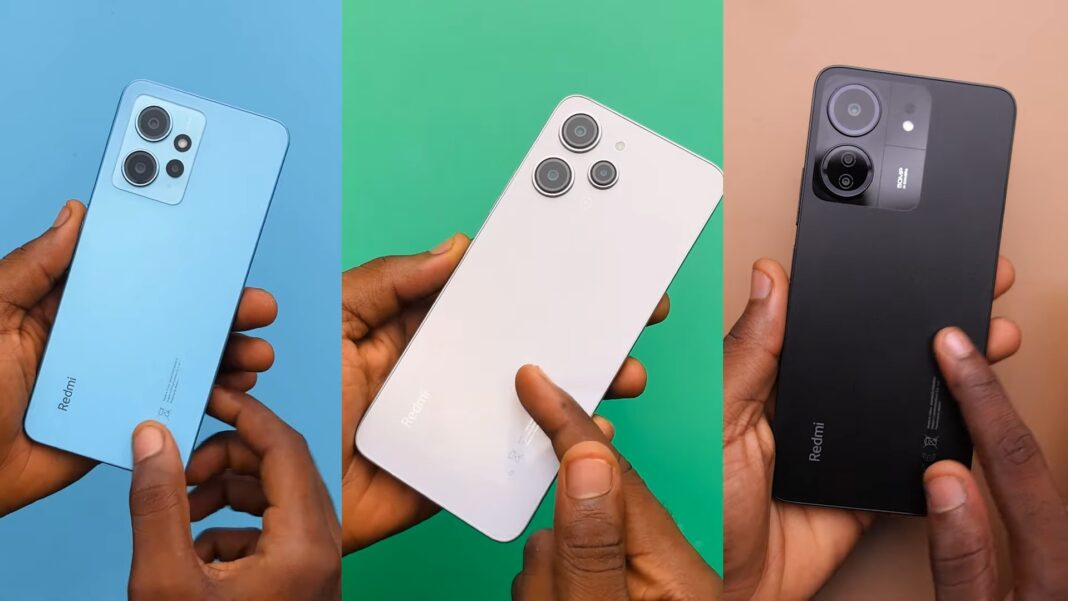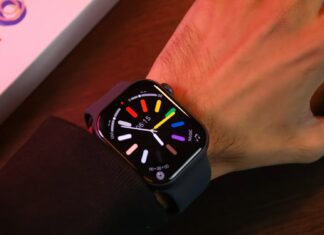Xiaomi, a brand synonymous with delivering quality at an affordable price, has been at the forefront of this pursuit. With the introduction of the Redmi Note 12 4G, Redmi 12, and Redmi 13C, Xiaomi has once again stirred the market. The Redmi Note 12 4G emerges as a potential leader in the mid-range segment, boasting features that are typically reserved for more expensive devices. The Redmi 12, on the other hand, offers a balanced blend of functionality and affordability, aiming to deliver a solid smartphone experience without any extravagance. Meanwhile, the Redmi 13C targets those at the entry-level, providing essential smartphone capabilities at a price point that’s hard to overlook.
In this full review, we will meticulously examine each phone’s display, performance, camera quality, battery life, and overall value proposition. This analysis is aimed not only at highlighting the strengths and weaknesses of each model but also at providing a clear picture of how these devices stack up against each other in a competitive market. So, let’s embark on this journey of discovery, uncovering which of these Redmi smartphones stands out as the true champion of value for money.
The Display – A Window to Your Digital World
The Redmi Note 12 4G’s display is a standout feature in the mid-range smartphone segment. Its 1080p 120Hz AMOLED panel sets a high standard, offering a blend of vivid colors, deep blacks, and smooth motion.
Design-wise, the Note 12 4G exudes a modern and sleek aesthetic. The hole-punch cutout for the front camera is minimally invasive, maximizing screen real estate and contributing to an immersive viewing experience. The use of Corning Gorilla Glass 3 in its construction not only adds a layer of durability but also gives it a premium feel. The design choices here reflect a keen understanding of user preferences for slim bezels and an unobstructed display.
The Redmi 12’s 1080p 90Hz IPS LCD might not match the vibrancy of an AMOLED screen, but it stands out in its own right. This display offers excellent color accuracy and brightness levels that are more than sufficient for everyday use. The 90Hz refresh rate, while lower than the Note 12’s, still provides a noticeably smoother experience than the standard 60Hz found in many budget and mid-range phones.
In terms of design, the Redmi 12 maintains a contemporary look with its hole-punch display. This feature, along with reasonably sized bezels, gives it an up-to-date appearance. The choice of materials and build quality are in line with what is expected at this price point, offering a good balance between aesthetics and cost-effectiveness.
The display on the Redmi 13C is particularly noteworthy for its segment. Sporting a 720p 90Hz IPS LCD screen, it offers a respectable visual experience, especially considering its price range. The lower resolution is a trade-off for cost savings, but the screen still manages to deliver satisfactory sharpness and color reproduction for everyday tasks like social media, web browsing, and video playback.
Design-wise, the 13C incorporates a U-shaped notch, a design choice that might seem dated to some but is a practical solution to achieve cost savings without major compromises in screen space. The build quality and design of the 13C are surprisingly good for a budget device.
Performance – The Core of Smartphone Experience
The Redmi Note 12 4G is equipped with the Snapdragon 685 processor, paired with the Adreno 610 GPU. This combination positions the Note 12 as a robust contender in the mid-range category. The Snapdragon 685 is known for its efficient performance, ensuring smooth operation even under load. This is particularly noticeable in resource-intensive tasks such as 3D gaming, video editing, or running multiple apps simultaneously.
Additionally, the Adreno 610 GPU contributes significantly to the phone’s gaming capabilities. Games with high graphical demands run smoothly, with minimal lag or frame drops. This makes the Note 12 an ideal choice for mobile gamers who need a balance between performance and affordability.
The Redmi 12, powered by the MediaTek Helio G88 processor and the Mali G52 MC2 GPU, offers a performance that hits the sweet spot for most day-to-day tasks. While it may not match the raw power of the Note 12, it efficiently handles everyday applications, from social media browsing to moderate gaming.
The Helio G88 is a reliable chipset that ensures a smooth user experience in regular use cases, including HD video streaming, photo editing, and running various apps without noticeable lag. When it comes to gaming, the Redmi 12 handles most games well, although it might struggle slightly with the highest settings in graphically intensive games. This makes it an excellent option for casual gamers and general users who prioritize a balanced performance without the need for extreme processing power.
The Redmi 13C, while the least powerful in terms of specs, is no slouch. It comes with the MediaTek Helio G85 processor, a chipset designed to provide respectable performance in budget smartphones. The G85, coupled with a capable GPU, ensures that the 13C handles basic tasks like web browsing, social media, and standard apps with ease. In gaming, the 13C performs admirably within its limits. It’s well-suited for casual gaming, managing to run most games at lower settings without significant issues. This is impressive for a phone in its price range and makes the 13C a great choice for users who need a smartphone for basic tasks and occasional gaming.
A crucial aspect often overlooked in smartphone reviews is memory and storage, which significantly impact the user experience. The Redmi Note 12 4G is a standout in this category, offering configurations of up to 8GB of RAM. This ample memory ensures smooth multitasking and efficient handling of memory-intensive applications. In terms of storage, it boasts up to 256GB of internal space, utilizing the UFS 2.2 standard. Known for its faster read/write speeds compared to traditional storage types, UFS 2.2 significantly enhances the phone’s performance by allowing quicker access to data. This means faster app launches, quicker file transfers, and a generally more responsive device.
While the Redmi 12 and Redmi 13C match the Note 12 in terms of memory and storage capacity, they differ in the type of storage used. Both these models come with eMMC 5.1 storage, which, while reliable, is generally slower than the UFS 2.2 standard found in the Note 12. This difference in storage technology can impact the overall performance, particularly during heavy usage or when running multiple apps simultaneously. Users might notice longer loading times for apps and slower data transfer rates compared to the Note 12.
The Redmi 13C, in particular, deserves recognition for offering up to 8GB of RAM and 256GB of storage at its price point. This is quite impressive for a budget phone, allowing users to enjoy a significant amount of storage space and the ability to run multiple apps without major slowdowns. However, buyers need to keep in mind that the more affordable nature of the Redmi 13C means the memory speeds might be slower, potentially affecting the fluidity of the user interface and the overall app performance.
Camera – Capturing Moments
The Redmi Note 12 4G stands out in the camera department, boasting a 50MP main sensor that delivers stunning image quality. The key strength lies in its advanced image processing, which ensures vibrant colors, sharp details, and excellent dynamic range in various lighting conditions. The inclusion of features such as Night Mode, Pro Mode, and AI scene optimization further enhances its capabilities, allowing for creative and professional-grade photography.
The video capabilities of the Note 12 are equally impressive. It supports video recording and features electronic image stabilization (EIS), which is crucial for capturing smooth and steady footage. This makes it an ideal choice for vloggers and content creators who require high-quality video recording without the need for additional stabilization equipment.
The Redmi 12 shares the same 50MP main sensor as the Note 12, but with slightly different processing algorithms. The result is consistently good photos that are rich in detail and color accuracy. While it may not match the Note 12’s prowess in challenging lighting situations, it still performs admirably for its price point.
However, the Redmi 12 falls short in video recording compared to the Note 12. The lack of stabilization means that videos can be shaky, especially when recording while moving. Despite this, it’s more than capable of handling casual video recording needs, offering various modes and settings to enhance the video shooting experience.
The Redmi 13C’s camera setup is impressive, considering its budget-friendly price tag. The 50MP main camera captures detailed and well-balanced photos, especially in good lighting conditions. Its performance in low light is decent, thanks to software enhancements, but it doesn’t quite reach the levels of the Note 12 or Redmi 12. Video recording on the 13C is basic but functional. Without stabilization, it’s best suited for stationary shots or situations with minimal movement. Despite this, it’s a commendable feature for a phone in this price range and suitable for everyday video capture needs.
Battery Life – Staying Powered All Day
Battery life is a critical factor for many users, and here, all three phones shine with their 5,000mAh batteries. The Note 12 edges out its siblings with 33W fast charging support, this feature significantly reduces downtime, allowing the phone to be charged from 0 to 50% in approximately 30 minutes. The Redmi 12 and 13C, while supporting slower charging speeds with 18W, still offer enough battery life to get through a full day of moderate to heavy use. This makes them reliable companions for users who are often on the go.
Pricing – The Deciding Factor
The pricing of smartphones is a crucial factor for many consumers. In the case of the Redmi Note 12 4G, Redmi 12, and Redmi 13C, each model is priced to reflect its features and market position, offering different value propositions. The Redmi Note 12 4G stands at the higher end of the mid-range spectrum. The base model with 4GB RAM starts at around $135, while the recommended 8GB variant is about $165. This pricing is a bit steep compared to its siblings but is justified by its superior features such as the AMOLED display, enhanced processor, and fast charging capabilities.
Positioned in the mid-range category, the Redmi 12 starts at approximately $145 for the 4GB version, making it more accessible than the Note 12 4G. The 8GB RAM variant, priced around $170, provides a balanced experience in terms of performance and price. The Redmi 13C is the most economical option, priced around $130 for the 4GB model and $160 for the 8GB version. This price point makes it an excellent choice for budget-conscious consumers, such as students or first-time smartphone buyers. The 13C manages to offer essential smartphone functionalities at a highly affordable price, making it an attractive option for those seeking a basic, reliable phone.
Below is a comparison table that outlines the key specifications and features of the Redmi Note 12 4G, Redmi 12, and Redmi 13C:
| Feature | Redmi Note 12 4G | Redmi 12 | Redmi 13C |
|---|---|---|---|
| Display | 1080p 120Hz AMOLED | 1080p 90Hz IPS LCD | 720p 90Hz IPS LCD |
| Display Protection | Corning Gorilla Glass 3 | Standard Protection | Standard Protection |
| Processor | Snapdragon 685 | Helio G88 | Helio G85 |
| GPU | Adreno 610 | Mali G52 MC2 | Mali-G52 MC2 |
| RAM Options | Up to 8GB | Up to 8GB | Up to 8GB |
| Storage Options | Up to 256GB (UFS 2.2) | Up to 256GB (eMMC 5.1) | Up to 256GB eMMC (EMMC 5.1) |
| Main Camera | 50MP | 50MP | 50MP |
| Video Quality | Superior with stabilization | Good, no stabilization | Adequate, no stabilization |
| Battery Capacity | 5,000mAh | 5,000mAh | 5,000mAh |
| Charging Speed | 33W Fast Charging | 18W Charging | 18W Standard Charging |
| Price Range | ~ $135 – 165 (No NFC) | ~ $145 – 170 | ~$130 – 160 (No NFC) |
Final Thoughts – Making the Right Choice
As we reach the end of this detailed comparison of the Redmi Note 12 4G, Redmi 12, and Redmi 13C, it’s evident that each phone has been crafted with a specific user demographic in mind. The Redmi Note 12 4G emerges as the clear winner for those who prioritize high-end features and robust performance. Its superior AMOLED display, advanced processor, and enhanced camera capabilities, including video stabilization, make it an ideal choice. The slightly higher price point is a small premium for the quality and experience it offers.
The Redmi 12, positioned in the middle of this lineup, offers a harmonious blend of affordability and functionality. It’s a compelling choice for everyday users who seek a reliable and efficient smartphone experience without venturing into the high-end price bracket. Its decent performance, good camera quality, and solid battery life make it a practical choice for daily tasks and moderate multimedia consumption.
For those on a strict budget, or perhaps purchasing their first smartphone, the Redmi 13C is an excellent choice. It stands as a testament to the fact that affordability doesn’t have to come at the cost of usability. With its respectable performance, good camera quality for its price, and the inclusion of a large battery, the 13C is a prime example of cost-effective technology. It’s particularly suitable for users who have basic smartphone needs, such as calling, texting, light web browsing, and social media use.
So, each model in Xiaomi’s Redmi series caters to a specific market segment, ensuring that there’s a suitable option for every type of user. Whether it’s the high-end features of the Note 12, the balanced offering of the Redmi 12, or the budget-friendly nature of the 13C, Xiaomi continues to provide value-packed smartphones for all.

















